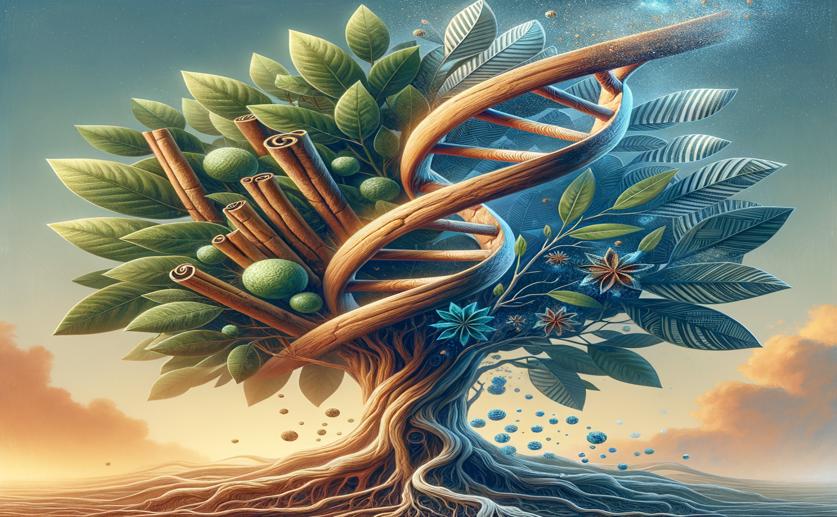
Key Genes Behind Citral Aroma Production in Cinnamon Trees Revealed
Jim Crocker
1st June, 2024

Image Source: Natural Science News, 2024
Key Findings
- The study focused on the essential oils of three citral-type and one non-citral type varieties of Cinnamomum bodinieri
- Citral-type varieties had high citral content (80.63% to 86.33%), making them suitable for commercial use
- Key genes involved in citral biosynthesis, such as CbGES and CbADH, were more active in citral-type varieties
References
Main Study
1) Identification of key genes controlling monoterpene biosynthesis of Citral-type Cinnamomum bodinieri Levl. Based on transcriptome and metabolite profiling
Published 31st May, 2024
https://doi.org/10.1186/s12864-024-10419-7
Related Studies
2) Chemical Composition and Antioxidant Activity of the Essential Oils of Citral-Rich Chemotype Cinnamomum camphora and Cinnamomum bodinieri.
3) Citral inhibits cell proliferation and induces apoptosis and cell cycle arrest in MCF-7 cells.
4) Variations in Essential Oils from the Leaves of Cinnamomum bodinieri in China.



 31st May, 2024 | Greg Howard
31st May, 2024 | Greg Howard